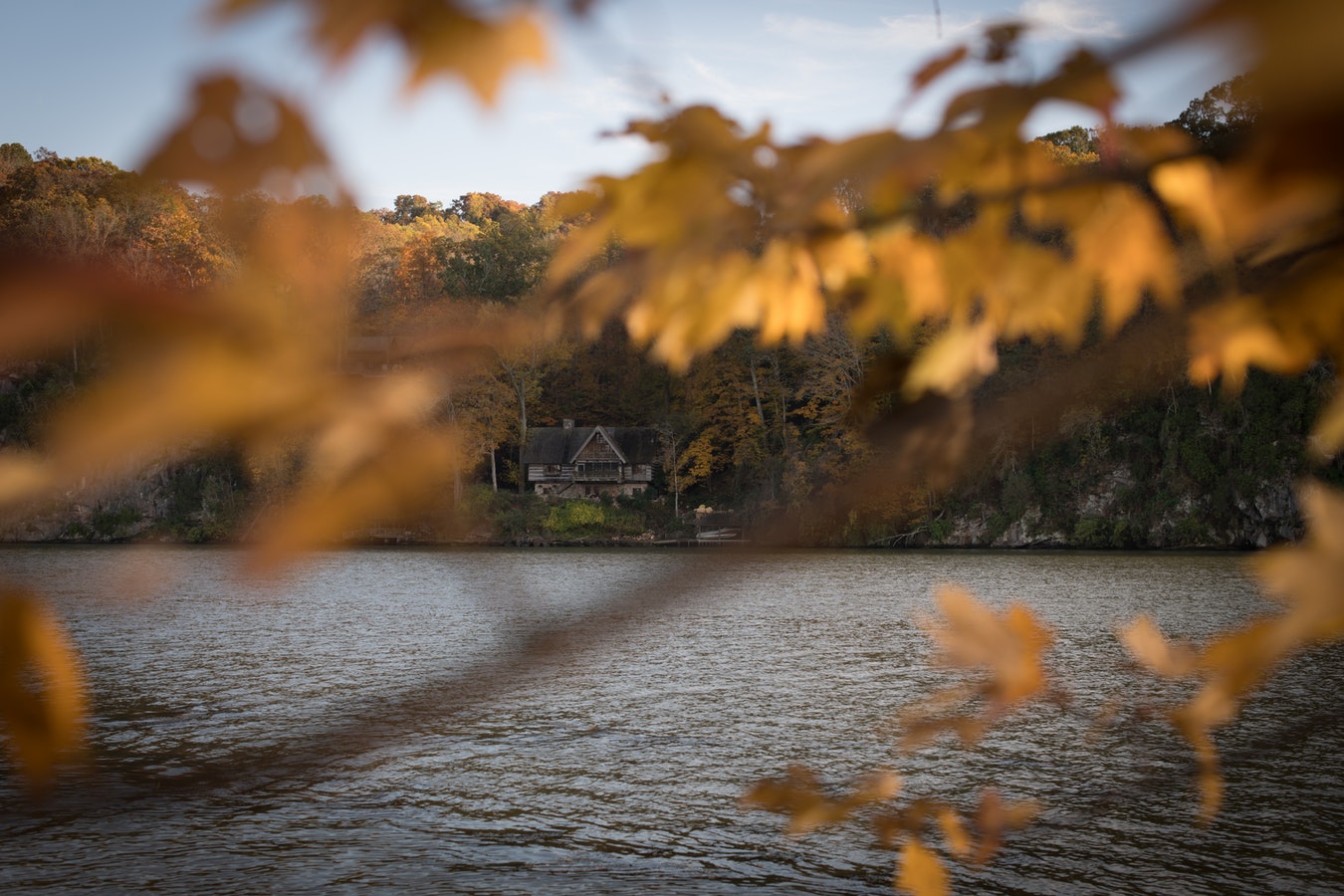Visiting your cottage is a wonderful chance to get away from it all, bond with your family and relax. But no vacation lasts forever.
As the summer gives way to fall and the weather gets colder, it’s important to winterize your cottage, and double-check your preparations. Use this cottage closing checklist to make sure your cabin is safe and secure, all winter long.

-
Fact 1 Check Your Cottage For Risks and Damages
Arguably the most important part of closing your cottage really starts when you first open it for the year: inspection. During the winter, you won’t be there to watch or maintain your cabin, which means you won’t be there to make repairs if an overhanging tree branch damages your roof, or a minor leak turns into a major flood.
Unfortunately, these types of issues take time to fix, and it can be difficult and dangerous to make repairs once the weather starts to change. It gets harder to find contractors, there’s more risk of falling, frostbite and other perils and unexpected early storms or freezes can close off roads, preventing contractors from making repairs.
Play it safe — make a checklist of everything that needs to be fixed as early in the year as possible, then call contractors, or schedule dates to fix them. The summer will fly by, so don’t leave it for “when I get around to it.”
Your list should include:
Anything that could create a hazard: Look out for branches that are too close to powerlines or stretching out over the roof. Check your foundation for damage. Are there new cracks in the basement? Are there loose or sagging boards in the porch? What about the roof — are there missing tiles, or signs of water damage?
It’s a good idea to get your cabin professionally inspected — particularly if it’s located in an area prone to heavy snowfall or big storms. Remember, if your roof springs a leak in the middle of the winter, no one will be there to see it.
Needed maintenance: You should clean the gutters, clear out nuisance plants and perform other necessary maintenance during the summer. If you suspect termites, rats or another infestation, handle it as quickly as possible — it can make a world of difference in how well your cabin weathers the winter.
Winterization purchases: Do you need special items, such as heating coils for the roof to prevent excessive snow buildup? Insulation for the pipes? A new burglar alarm system to protect your property? If so, you probably won’t be able to purchase all your supplies at the local hardware store. Order any needed materials ahead of time, so that you’re well-prepared.
You should follow this with a second inspection late in the year, at least a few weeks before you plan to close up the cabin for winter. Like any house, your cottage can be subject to wear and tear through daily use. The earlier you catch it, the better.
-
Fact 2 Prepare and Test Any Automated Systems
Depending on the cottage, you may have a range of automated systems to protect your property over the winter, such as:
- Sump pump
- Heater
- Burglar alarm
- Light timer
Decide which of these systems you plan to use over the winter early on, since it may impact your preparation. For example, if you do not intend to use the heater, you’ll need to carefully drain your pipes to ensure they don’t freeze. Similarly, without the sump pump, you will need to pay more attention to the grade, and perhaps take measures to divert water if your property is vulnerable to rain or meltwater.
Sump Pumps
Before you test your sump pump, inspect it for clogs. Clear any debris from the outside pipe. Then, unplug the float cord and plug the pump straight into the outlet to make sure it turns on.
Once you’ve confirmed that it’s running, it’s time to test it using water. Plug the pump back into the float cord and pour enough water into the crock to fill it. The pump should turn on automatically, drain the crock and turn off again. Fill the crock again a couple times to make sure your sump pump turns on and drains water every time.
Furnaces and Heaters
Leaving your furnace on at a low temperature can reduce the risk of freezing pipes. According to Consumer Reports, you should set a minimum temperature of 13° C (55° F) to prevent freezing. However, keep in mind that leaving the heat on may not prevent freezing in all cabins. If your pipes run along the outside wall, in an uninsulated garage or another area subject to low temperatures, you may want to drain your pipes instead.
If you do decide to heat your house, it’s a good idea to have your furnace cleaned and inspected. You should also test out the heater before you leave to make sure it switches on and off at the correct temperatures.
Burglar Alarms
If you have a monitored burglar alarm system, contact the provider. You should be able to trip the alarm to test it, then let your provider know it was just a test using a pin or password. The procedure will vary based on the alarm and alarm service.
-
Fact 3 How to Winterize Your Cabin
Draining the pipes
If you’re planning on being gone for the whole season, draining your pipes is usually the best option. Here’s how to do it:
- Turn off the power to your water heater and the main valve (typically in the basement or a utility room).
- Disconnect any hoses from external spigots, and open all your faucets. That includes utility sinks and outdoor faucets, as well as indoor sinks and baths.
- Now, drain the water heater. Wait for several hours for the water to cool, then connect a hose to the spigot at the bottom, and drain it into a bucket or floor drain.
- Once your pipes are empty, close all the taps again. DO NOT turn on the main valve or the power to your heater.
Wrap pipes
If you’re not draining your water, winterize pipes can help prevent freezing. Purchase foam insulation and wrap it around the pipes, particularly in any areas likely to get very cold — for example, where they run outside the house or are against an exterior wall.
-
Fact 4 Clean and Unplug Your Appliances
Any appliance that isn’t going to be running should be unplugged. This will cut down on wasted energy (some appliances use a small trickle of electricity even when they’re off) and reduce certain risks such as power surges, which could conceivably damage appliances or start a fire while you’re gone. Leave time to defrost your refrigerator and freezer and clean all kitchen appliances before you leave.
If you’re planning on having automatic lights over the winter, make sure they’re in a safe place far from any flammable materials, and that the shades are not touching the lightbulbs. Lights produce a lot of heat and are capable of starting fires if left unattended next to something flammable.
Don’t forget about gas. If you’re not heating the house over the winter, it’s a good idea to turn it off at the main valve. It’s unlikely to be a problem, but knowing there’s no chance of a gas leak means one less thing to worry about.
-
Fact 5 Store Valuable Property Out of View
You’ll have to decide what to lock up and what to take home. In general, it’s a good idea to take valuables home with you, and store anything that’s too large to transport out of view. An empty cabin will look far less attractive to thieves that a lavishly appointed one. If your cottage is insured against theft (and it should be), make sure you’ve recorded all valuables and your insurance is up to date.
You may want to rent a storage locker locally to store any valuable property you don’t plan to take with you. For smaller items, a safe deposit box is an easy and very safe way to store your property over the winter.
If you can, make sure you check on your cabin at least once or twice during the winter. If that’s not an option, consider hiring a property management company to maintain it, or asking a local friend to stop by every couple weeks. Don’t forget to give them a copy of your keys, in case they need to enter the cottage for some reason.
-
Fact 6 Last Steps to Close Your Cabin for Winter
By this point, you’ve winterized your cottage, and gotten everything ready to close up. Now, it’s time to take a last look around. Start with your appliances. Check that light timers, heated roof coils and anything else you’re leaving on is operating, and that all other appliances are unplugged. Then, turn on a faucet to make sure no water is in the pipes.
Next, walk around the property, looking for anything damaged or out of place. If you’ve forgotten to store your canoe or close your work shed, this is your last chance to check it.
Finally, secure your cottage. Check all windows to see that they’re closed and lock all your doors. Turn on your burglar alarm system, lock the front door and hit the road. After carefully running through your cottage closing checklist, you can enjoy the trip home, knowing your property will be safe and secure all winter long!
